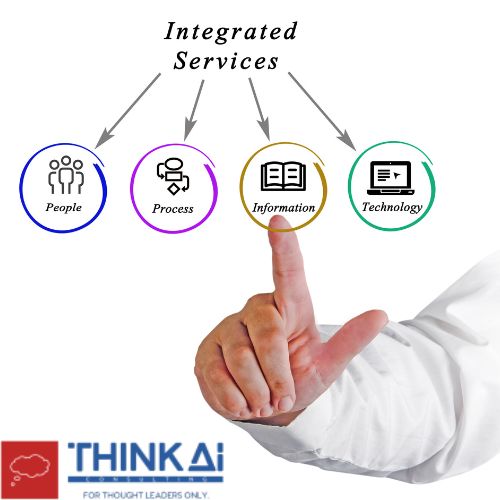In software development, staying competitive and agile is more critical than ever. With the emergence of new technologies, changing customer demands, and the constant need for innovation, software companies face multiple challenges from time to time.
One solution that is gaining traction to address these challenges is leveraging enterprise integration services in your firm’s day-to-day operation. By making use of these services, you can make your software firm more efficient and customer-centric. It includes a series of steps and the utilization of technologies and practices that facilitate the seamless connection and communication of various software applications, systems, and data within an organization.
The primary goal of Enterprise Integration is to enable different software systems to work together cohesively, share information, and automate processes efficiently. This integration is crucial for improving business processes, enhancing productivity, and gaining a competitive edge in today’s era of cutthroat competition, especially in the field of software development.
Types of Enterprise Integration Services
Data Integration: This involves the synchronization and consolidation of data from various sources and formats across the organization. Data integration ensures that data is accurate, consistent, and accessible when needed. It may include ETL (Extract, Transform, Load) processes, data cleansing, and data mapping.
Application Integration: Application integration focuses on connecting different software applications, both within and outside the organization. It allows for the real-time exchange of data and functionality between applications, streamlining business processes. Common methods include API (Application Programming Interface) integration, middleware, and message queues.
Business Process Integration: Business Process Integration (BPI) involves the automation and orchestration of business processes across different systems. BPI ensures that data flows smoothly through various steps in a workflow, eliminating manual interventions and reducing errors. Business Process Management (BPM) tools often play a role in BPI.
Cloud Integration: As cloud computing becomes increasingly prevalent, organizations need to integrate cloud-based services and applications with their on-premises systems. Cloud Integration Services enable seamless communication between cloud and on-premises resources.
Mobile Integration: With the proliferation of mobile devices, mobile integration services ensure that applications and data are accessible and functional on a variety of mobile platforms and devices. This includes mobile app development and mobile device management.
Monitoring and Analytics: Integration solutions often include tools for monitoring the health and performance of integrated systems. Analytics capabilities provide insights into system performance, user behavior, and trends, allowing organizations to optimize their processes continually.
Collaboration and Communication Integration: Integrating collaboration tools and communication platforms (e.g., email, messaging, video conferencing) ensures that employees can communicate and collaborate seamlessly across the organization. Take, for instance, Chatbots powered by Artificial Intelligence (AI), which can provide instant responses to common queries, troubleshoot issues, and even handle transactions.
Chatbot services can provide assistance at any time, ensuring that customers receive immediate responses to their inquiries, regardless of the time zone. In addition, Chatbots can be programmed to qualify leads, answer product-related questions, and even facilitate the subscription process. This streamlines the sales funnel, resulting in higher conversion rates and increased revenue for software companies.
In Conclusion
The integration of new technologies, including AI-powered enterprise integration services, can deliver exceptional customer experiences, streamline operations, cut costs, and remain competitive in an ever-changing market. As the software industry continues to evolve, embracing these technologies can be the key to sustained success and growth.

